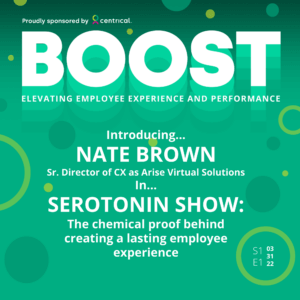Think about the last time you had a great customer service experience. The person who helped you went above and beyond to make sure you were happy. They probably smiled, were friendly, and seemed genuinely interested in helping you. Now think about the last time you had a terrible customer service experience. The person who helped you was probably rude, unhelpful, and made you feel like your problem wasn’t important.
Now, take that a step further: how do you think that employee felt about their job? It’s not a far stretch to assume that how employees treated you was a reflection of how they felt about their job–tired and burnt out? They probably wouldn’t go the extra mile for you. Fulfilled and supported? They probably went out of their way to make sure you were happy with your experience.
It’s not just a one-time thing, either. Customers who have consistently great experiences with a company are more likely to continue doing business with that company. On the other hand, customers who have bad experiences are much more likely to take their business elsewhere. In fact, 71% of consumers say they would take their business to another company.
Sr. Director of Customer Experience at Arise Virtual Solutions Nate Brown sees this direct correlation between CX and EX–so much so, that in his CX consulting, he typically starts from the inside out of the organization.
“As a CX consultant. When I come into a new organization, the first thing I asked for is: what does your employee experience look like? And how do you know? And what I get is a lot of assumptions. Let’s find out what our employees really think and feel their perceptions towards our brand, which is the definition of CX that’s, where we begin inside the house with the perceptions that our employees have of our brand. If they can’t be authentic ambassadors and serve truly out of joy and enthusiasm for the organization.”
It’s not just about making sure your employees are happy, though. In order to create a great customer experience, you need to make sure your employees have the tools and resources they need to do their job well. And this goes far beyond just creating fun experiences for employees–think of it in a more long-term fashion.
Nate uses the analogy of serotonin vs. dopamine–in order to create a lasting, positive impact from your employee experience, you have to create experiences that are going to induce serotonin, not short bursts of dopamine. He uses the brand Mid-Day Squares as an example–a Canadian company whose mission was to create a healthy, delicious alternative to a candy bar snack. As they created their product, the pride for healthy eating and innovation seeped into their culture. So much so, that as their employee experience got better and better, their sales grew higher and higher.
“If you look at the pride, the enthusiasm of just the brand, the compelling nature of the brand and the people that work. They can do anything. The sky is the limit because their employees really care. They’re there for a reason. They’re helping people to have healthier lifestyles. They’re doing something meaningful and they’re winning together. Talk about serotonin flowing everywhere. It’s just a, it’s a giant reservoir of it. And in a company like that is unstoppable.”
A serotonin-inducing employee experience involves everything from providing access to training and development opportunities to ensuring that they have the latest technology to putting a mission behind your business–like Mid-Day Squares.
Creating a positive employee experience is about more than just improving morale–it’s about giving your employees the tools they need to succeed, and setting pace for the values they want to live by. And when your employees are successful and fulfilled, your customers will be too.
What’s at Stake?
One of the biggest mistakes an organization can make is assuming their customers won’t feel the effects of their employee experience.
Nate says it’s incredibly obvious to customers when things aren’t going well internally:
“The customers are smart enough to feel that they will know that and the work quality will not be there.”
So how do you create a positive employee experience? It starts with understanding what your employees need and want. Here are some tips:
- Talk to your employees. Get feedback from them on what’s working and what isn’t.
- Create a culture of open communication. Encourage your employees to speak up and give their input.
- Offer training and development opportunities. Help your employees grow in their careers.
- Provide the latest technology. Give your employees the tools they need to do their job well.
- Show appreciation. Let your employees know that you value their contributions.
When you create a positive employee experience, you’re not just impacting customer experience but also improving your bottom line. Invest in your employees and watch as it pays off in both happy customers and increased profits.
For more from Nate Brown, listen to him on the BOOST podcast.

Engage and motivate your frontline teams
Improve performance with an AI-powered digital coach
Deliver world class CX with dynamic, actionable quality evaluations
Boost performance with personalized, actionable goals
Nurture employee success with the power of AI
Listen and respond to your frontline, continuously
Drive productivity with performance-driven learning that sticks
Drive agent efficiency, deliver client results
Keep tech teams motivated and proficient on products and services while exceeding targets
Maintain compliance while building customer happiness and loyalty
Enlighten energy teams to boost engagement
Engage, develop, and retain your agents while driving better CX
Improve the employee experience for your reservations and service desk agents








 Madeleine Freind
Madeleine Freind
 Natalie Roth
Natalie Roth Linat Mart
Linat Mart












 Doron Neumann
Doron Neumann Gal Rimon
Gal Rimon Daphne Saragosti
Daphne Saragosti Ella Davidson
Ella Davidson Ariel Herman
Ariel Herman Ronen Botzer
Ronen Botzer